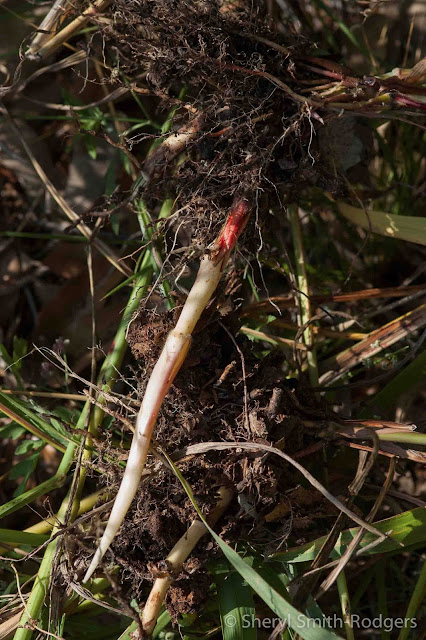A lot of folks, if they saw me wandering through our yard as much as I do, might say I have way too much time on my hands. As for me, I say I don't have ENOUGH! Because sometimes, waiting for nature to unfold requires a LOT of time...and patience. Take yesterday afternoon, for instance. I happened to be in the back yard with my camera, looking at plants, when I saw a bee dart into a hole. If you're the size of a bee, then this hole might be cave size. From this perspective, her hole looked like a cavern entrance on the side of a hill.
See the hole? In the photo above, it's on the far right side, middle of the image. So I decided I'd wait and see if I could catch a picture of her. While I crouched on my haunches, I took some pictures of the...
 |
| ...volunteer vine, likely in the morning glory family... |
 |
| ...the volunteer black-eyed susan, likely planted by a bird... |
 |
| ...and the healthy prairie verbena (I think that's right). |
Meanwhile, I heard and barely saw a bee circle me at least twice. Then she landed on the dirt mound just out a bit from my elbow. "C'mon, you lost?" I said, "don't you know where your nest is?" Finally, I stood up to take a break, and she made a bee-line for a different hole! She'd been politely waiting for ME to move out of her way. In the photo above, her hole is just beneath the little white pebble. She's likely a different bee mom.
Here's another shot of her nest entrance. Alas, some rain started so I headed for the house. No more waiting on bee appearances the rest of the day.
This morning, I got a shot of her entrance. But no bee mom. (Yesterday heavy rains really brightened up our small crop of moss!)
Just awhile ago, I went back out with my camera and got a few shots of her working on her nest. I've seen her abdomen and her green eyes so I'm pretty sure she's a digger bee species of Anthophora. Nearly three years ago, I blogged about the same species–"Acrobatic bee!"–when I found one roosting in our globe mallow. They're cool.
Time permitting, I'll keep trying to get a better photo of her. Wish me luck!


















































